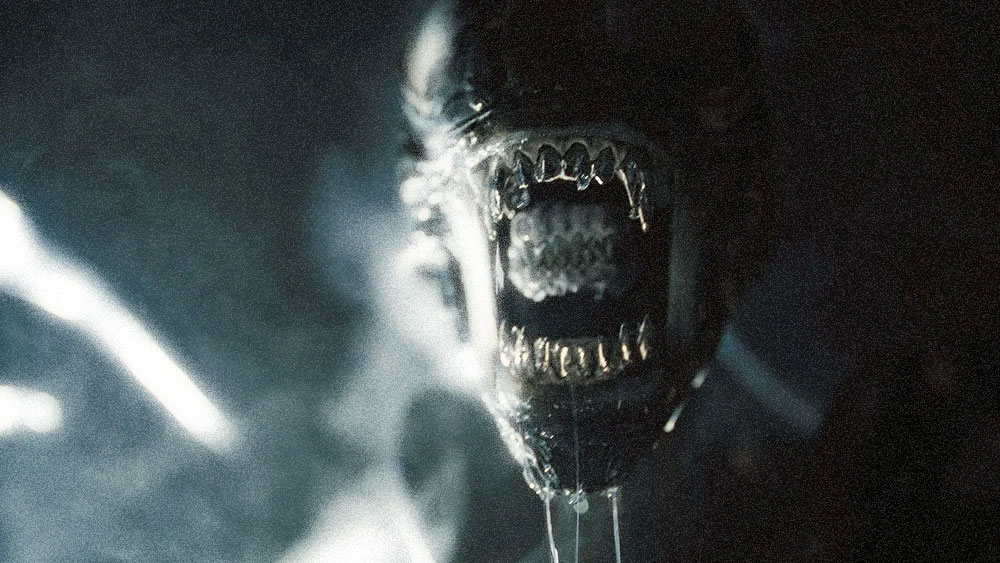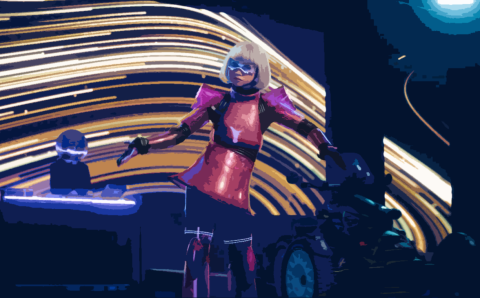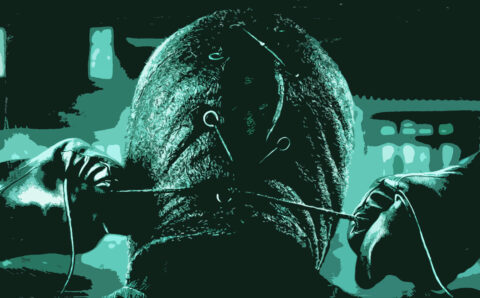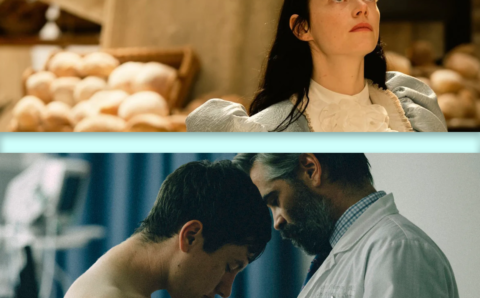
One of Hollywood’s more thankless tasks this year surely has to be director Fede Alvarez’ near-fool’s errand in creating Alien “1.5”: Romulus. Alvarez and his co-writers nestle their story right between Ridley Scott’s era-defining original space slasher Alien (1979) and James Cameron’s impossibly effective military horror-fest Aliens (1986) — two films considered among the greatest.
If the originals were alchemy in the gooey, acidic flesh, Romulus is the scripted chemistry lab that still impresses. Set two decades after the first Alien and several before the second, Alien: Romulus finds miner Rain (Cailee Spaeny) looking for a way out of indentured servitude to the series’ big bad corporation Wayland Enterprises. An opportunity with some long-lost blue-collar friends soon presents itself, and they all make their way into orbit and commandeer an abandoned, derelict spacecraft. Quickly, the group finds out exactly how and why it was left in shreds.
Alvarez goes full retro with Romulus, sticking to the originals’ late-century digital design and practical effects with such discipline that he’s staked a new trilogy, swiftly ignoring Alien³ (1992), which director David Fincher confessed was disastrous, and Alien Resurrection (1997), a movie better known for a two-second basketball scene than its actual story.
Artist H.R. Giger’s xenomorphs remain thrilling on the big screen. Scott’s recent efforts in prequel territory with Prometheus (2012) and Covenant (2017), though world-building and well-acted, left much to be desired with his cartoonish, scarcely seen CGI villains. Used to buckets of blood on set, horror vet Alvarez has no such problem in Romulus — practical drips and sharp biology have always been what give Giger’s nightmares reality.
Still, Alvarez doesn’t seem to wield as much creative license here as he enjoyed in his underrated Evil Dead reboot (2013), which took extremely little from the original series and did away with the once-defining slapstick entirely. The Force Awakens (2015), more remake than reboot, instead seems like the prototype, the kind studio 20th Century would deem safe.
But the 1:1 ratios of specifically Aliens to Romulus soon become hard to ignore, as had been the case with A New Hope (1997) and Awakens. Inviting direct comparison to source material that illustrious is bound to disappoint some moviegoers. Here still are the abused android, the boy scout typecast, the outfit clown, the disposable female warrior, and of course the reluctant heroine.
In nearly every pairing, Romulus’ side is the weaker, and the origin is Alvarez’ early decision to craft them all as amateurs. Aliens’ crew survives by militaristic discipline and innovation, vicarious badassery on screen; Romulus’ persists by accident and luck, like watching squirrels cross a minefield.
With simply more character range of skill sets and specialties to build his shots around, Cameron in Aliens quickly orchestrates a one-shot that takes us from the marines raiding the armory, into the final line-up, and finally onboard the drop vehicle. Sergeant Apone — played by actual vet Al Matthews — narrates orders and pumps adrenaline. The marines’ deliberate exploration into the colony is professional and careful, making the inevitable, abrupt chaos feel more unrelenting and devastating than the drawn-out, slipshod series of takedowns that ultimately befall some of the novices in Romulus.
What shot could Alvarez have possibly composed to elicit the same fire? Panning around the room while everyone fails to prepare?
Borrowing instead the one-by-one, prey approach of slashers like the original Alien is a regression not because all slashers are, but because this slasher specifically is. Had Romulus showcased original extraterrestrial design with the same, elite degree of technical expertise, it’d be one of the best sci-fi movies of the year. But that’s not where Alvarez has planted himself. Instead, he’s in occupied territory, a panther to one side and a lion to the other. Fairweather fans may never notice, but longtime rewatchers will sense the feast to come in the films’ discourse: this is the same space war but without space marines. That direction makes for only a loose elevator pitch and ultimately, a movie that misses out on greatness even if it does sidle up to its brethren in impressive technical DNA.
Romulus’ flaws are mercifully only a problem in the middle, forgoing density in what should be a hearty act two. By the final act, the set pieces do become richer as earlier fumbles resolve and narrow the focus.
The rad fanfare surrounding Romulus is a welcome way “in” for new fans. Both Alien and Aliens are currently streaming across the Disney+ services. AMC facehugger bucket in tow, those who assumed these were about as advanced technically as a 1930s ghost movie are in for a welcome surprise. The franchise never lapsed; it’s only become more raw, even if the latest meat is a fattier cut.
Ryan Derenberger is a freelance journalist and editor, a Journalism and AP Language teacher at Whitman HS in Bethesda, MD, and the founder of 'The Idea Sift.' He also serves on the board of directors for student journalism nonprofit 'Kidizenship.'














